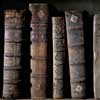Latest news and articles
Spring 2025 Update
This update adds 40 born digital letters edited by Electronic Enlightenment’s interns and visiting researchers, the results of ongoing collaborations with Bodleian Libraries Special Collections and beyond. read more…
Phillis Wheatley Peters
Phillis Wheatley’s Poems (1773) and letters combine to form a radical assertion of authorship, identity, and intellect. In this post, Kate Davies explores their significance in eighteenth-century literary and cultural history. read more…
The Plantation Papers of the Barham Family
In this post, Tessa van Wijk, Electronic Enlightenment visiting researcher, introduces the Barham plantation papers, and the intertwined language of economic expedience and ‘benevolent’ ownership in late 18th century slaveholder letters. read more…
Colonial Myth-making and Anti-Scottish Sentiment in Charles Bertram’s Letters
UNIQ+ intern Sophie Dickson explores Anti-Scottish sentiment in the letters of antiquarian forger Charles Bertram, as part of her editorial project on the correspondence between Bertram and famous antiquarian William Stukeley. read more…
Epistolary Form in the Letters from Charles Bertram to William Stukeley
UNIQ+ intern Olivia Flynn writes on the way Charles Bertram’s epistolary style played a role in the perpetuation of his false map of Roman Britain, in his letters to famous antiquarian William Stukeley. read more…
Slavery in the Electronic Enlightenment Collection
Tessa van Wijk, Electronic Enlightenment visiting researcher, shares the outputs of her survey of the language of enslavement across the English and French letters in our collection, and addresses some of the issues that digital projects face when working with topics such as the transatlantic slave trade. read more…
